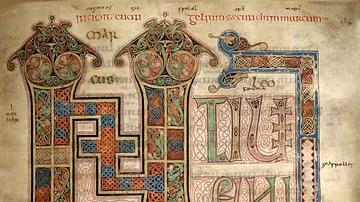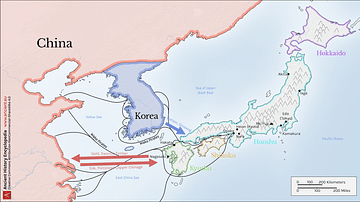Illustration
A map illustrating the geography and history of Holy Island, also known as Lindisfarne. A tidal island off the northeast coast of England in Northumberland, it holds significant historical and religious importance due to its early Christian monastery, founded in 635. The island became a center of Christian learning and missionary work in Anglo-Saxon England. Its remote and serene location contributed to its role as a spiritual and scholarly retreat. Saint Cuthbert, one of Lindisfarne’s most venerated figures, served as a monk and later Bishop of Lindisfarne. Around 700, the island monastery produced the Lindisfarne Gospels, an illuminated manuscript celebrated for its intricate Celtic, Anglo-Saxon, and Christian designs.
The Viking raid on Lindisfarne in 793 is one of the first, most notorious, and historically significant events of the Viking Age. On June 8, 793, Norse warriors attacked the island's monastery, looting its treasures, killing monks, and causing widespread devastation. This brutal assault shocked contemporary Christian Europe and marked the dawn of the Viking Age, heralding a period of frequent raids and invasions across the British Isles and beyond.
About the Author
External Links
Cite This Work
APA Style
Netchev, S. (2024, June 12). The Holy Island of Lindisfarne. World History Encyclopedia. Retrieved from https://www.worldhistory.org/image/19073/the-holy-island-of-lindisfarne/
Chicago Style
Netchev, Simeon. "The Holy Island of Lindisfarne." World History Encyclopedia. Last modified June 12, 2024. https://www.worldhistory.org/image/19073/the-holy-island-of-lindisfarne/.
MLA Style
Netchev, Simeon. "The Holy Island of Lindisfarne." World History Encyclopedia. World History Encyclopedia, 12 Jun 2024, https://www.worldhistory.org/image/19073/the-holy-island-of-lindisfarne/. Web. 18 Apr 2025.








